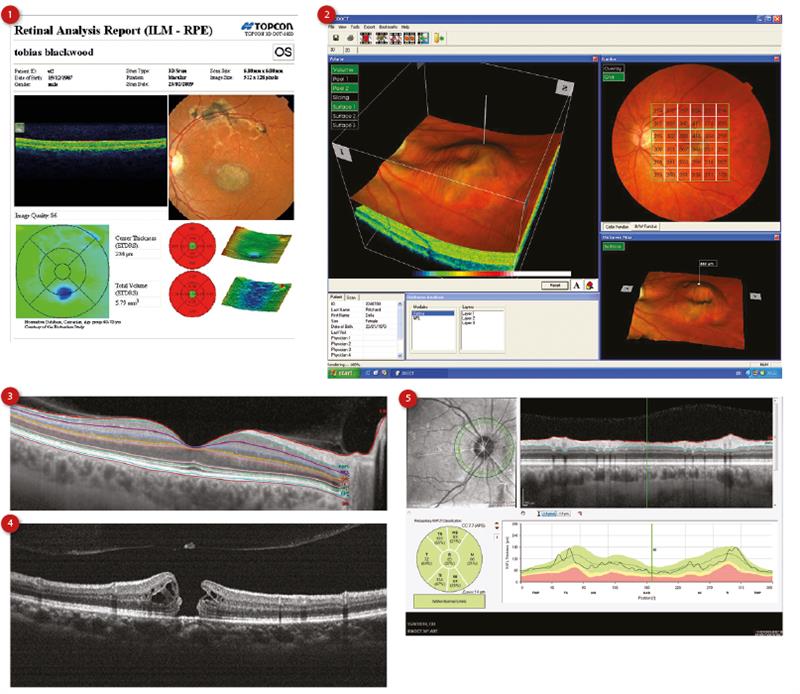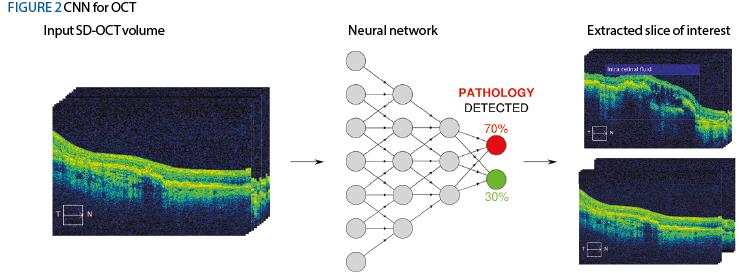‘Getting it right first time (GRFT)’ is the relatively new programme currently being championed by NHS England, and focuses on reducing unwarranted variation, while driving quality and efficiency in care.1 Research studies have identified that an accurate initial diagnosis and management plan is not only more efficient for the healthcare service as a whole, it also saves costs of in terms of care downstream.
NHS Hospital Eye Services deal with 1.7 million outpatient appointments per year, and, with rising demand for eye services, most NHS departments are struggling to cope with the increasing numbers of patients with ocular conditions such as age-related macular degeneration (AMD) and diabetic eye disease.2 It is estimated that 600,000 people in the United Kingdom alone have AMD, and trend analysis has revealed that there are likely to be 450 new cases of wet AMD per million population per year.3
A trend of NHS Hospital Eye Services engaging in referral refinement schemes and shared care services with community providers is emerging.4 As such, this presents an incredible opportunity for optometrists to refine referrals, as well as potentially manage ‘stable’ follow up patients and thereby increase revenues. In many ways, this represents an expansion of the traditional optometrists’ role to that of a more holistic one of becoming a primary eye care specialist.
The Rise of OCT
Optical coherence tomography has rapidly emerged as a highly useful modality to analyse the retina and identify diseases of the macula. It involves the application of low infrared light to the retina to develop a three-dimensional visualisation of the retina and deeper layer structures. It has positioned itself as the gold standard in evaluation of many forms of macular pathology as well as measure treatment responsiveness.
In recent years, increasing numbers of independent optometrists have acquired OCT scanners and major chains are also looking at doing the same, in an attempt to formally expand into primary eye care and narrow the gap between optometry and ophthalmology.
OCT is, however, a complex modality, requiring detailed knowledge in order to interpret the scan outputs accurately. It often requires extensive experience and errors of interpretation can occur. A recent meta-analysis study revealed OCT sensitivity of detecting abnormalities to be 87%, with a specificity to be 78%.5

Figure 1: Example OCT plots
Convolutional neural networks
It is likely that diagnostic variability will increase as OCT deployment increases outside of hospitals and specialised practices, where experts with years of experience in their interpretation might not be available. Visulytix, a cutting-edge artificial intelligence (AI) company based in London, is developing a decision support platform to assist health professionals of all experience levels and help maintain the high diagnostic quality expected by patients.
Centaur is based on deep learning, and more specifically convolutional neural networks (CNNs),6 a type of machine learning algorithm that stacks layers of artificial neurons learning representations of the data, that increases with the depth of the network; while the initial layers are sensitive to rudimentary features such as lines, the final few layers recognise complex combinations of patterns. CNNs enable computers to efficiently detect patterns in data, including images and sound, with levels of performance approaching that of humans and even exceeding it in some applications such as image classification7 and speech recognition8 (figure 2).

Figure 2: CNN for OCT
Conventionally, human experts do not take full advantage to the three-dimensional nature of OCT scans: using often unintuitive controls, they scroll through slice by slice in an attempt to come to a decision. In contrast, Centaur interprets the entire scan simultaneously, allowing decision-making based on spatial features that span multiple-slices, achieving performance rivalling that of experts (Visulytix, unpublished data 2017).
Centaur can detect anomalies and classify pathologies in a few seconds, in comparison to minutes for Human experts, and thereby integrating seamlessly into healthcare professionals’ workflow. By essentially providing an ‘expert-on-a-chip’, Centaur reduces diagnosis variability and improves the likelihood of pathology detection. It is being trialed at major ophthalmic academic institutions around the world, and is expected to be commercially available towards the end of the year.
AI solutions such as Centaur suggest a paradigm shift in ophthalmic care in the not too distant future. Such solutions will assist the healthcare professionals to make the right decisions, first time, and in doing so will potentially result in cost savings in what is a challenging period for healthcare services around the world.
Mr Sameer Trikha is consultant ophthalmologist at Kings College Hospital NHS Foundation Trust, and chief medical officer with Visulytix. Dr Nicolas Jaccard is the chief technology officer at Visulytix. Mr Jay Lakhani is the chief executive officer at Visulytix.
References
1 NHS Clinical Improvement, Professor Tim Briggs, 17/02/2017 (accessed on 22/05/2017 at https://improvement.nhs.uk/news-alerts/getting-it-right-first-time)
2 NHS Digital (accessed on 22/05/2017 at http://content.digital.nhs.uk/article/2021/Website-Search?productid=23698&q=title%3a+%22hospital+outpatient+activity%22&sort=Most+recent&size=10&page=1&area=both#top)
3 Royal College of Ophthalmologist’s Age-related Macular Degeneration Guidelines, Professor U Chakravarthy, September 2013 accessed 22/05/2017 (available at https://www.rcophth.ac.uk/wp-content/uploads/2014/12/2013-SCI-318-RCOphth-AMD-Guidelines-Sept-2013-FINAL-2.pdf)
4 The Portsmouth-based glaucoma refinement scheme: a role for virtual clinics in the future? Trikha S, Macgregor C, Jeffery M, Kirwan J, Eye (Lond). 2012 Oct;26(10): 1288-94
5 Optical coherence tomography for the diagnosis, monitoring and guiding of treatment for neovascular age-related macular degeneration: a systematic review and economic evaluation, Mowatt G, Hernandez R, Castillo M, et al, HTA, Vol 18, Issue 69, Dec 2014, ISSN 1366-5278
6 Deep learning, LeCun, Yann, Yoshua Bengio, and Geoffrey Hinton Nature 521.7553 (2015): 436-444.
7 Deep image: Scaling up image recognition, Wu, Ren, et al. arXiv preprint arXiv:1501.02876 7.8 (2015).
8 Achieving human parity in conversational speech recognition, Xiong, Wayne, et al. arXiv preprint arXiv:1610.05256 (2016).
Further information email media@visulytix.com
